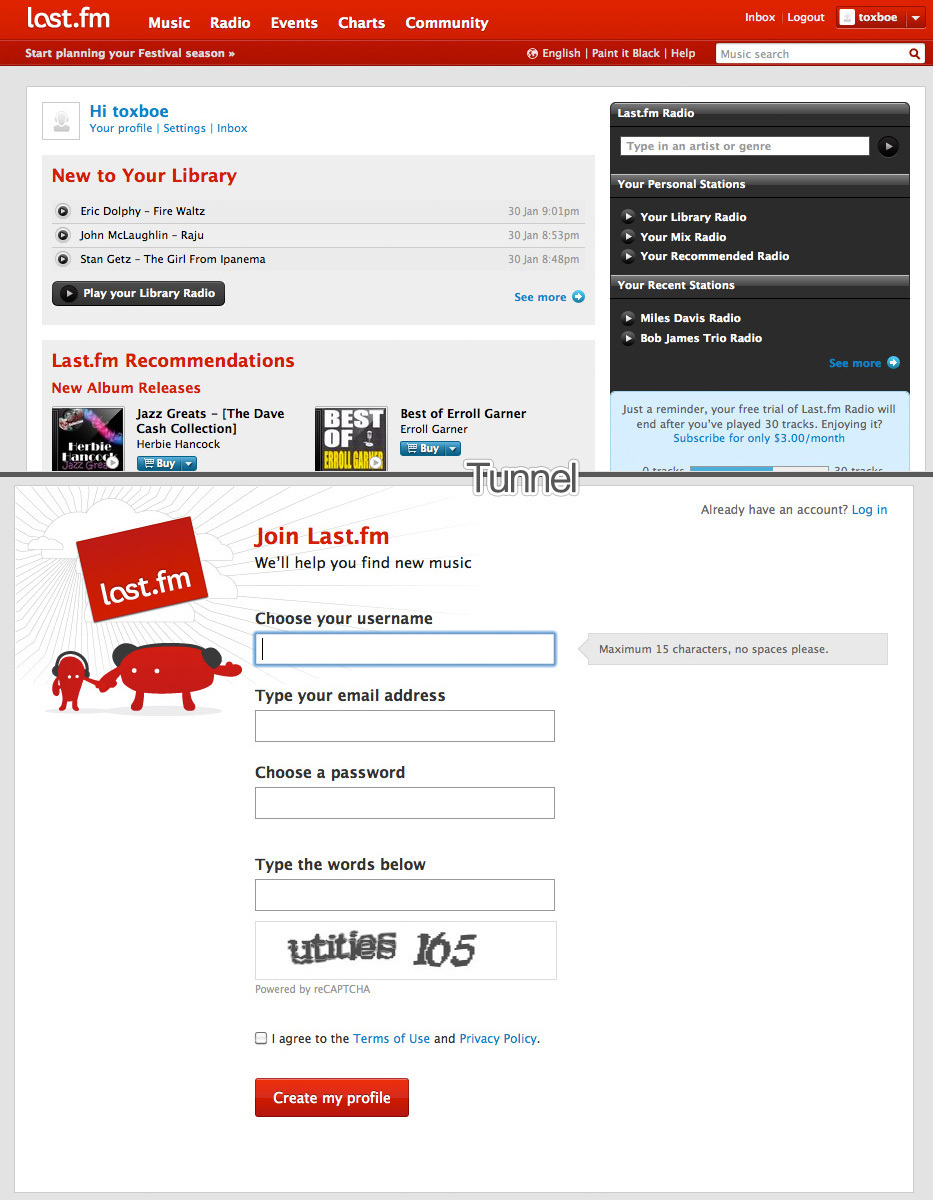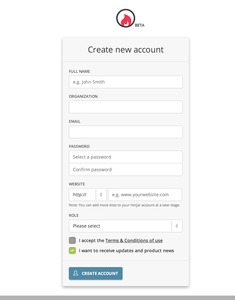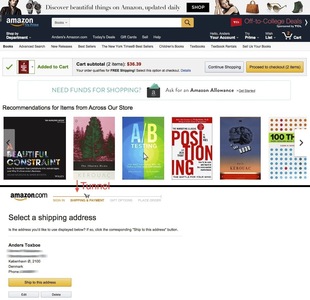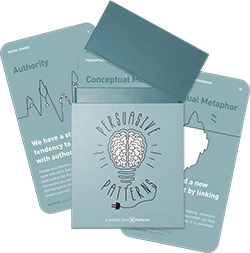Tunnelling
Design Pattern
Problem summary
Guiding users through a process or experience provides opportunities to persuade along the way
Example

▲ When you join last.fm, the chrome layout of the sign up form page is radically different from the chrome of the main site itself. All menu items and other links that will distract attention from signing up has been stripped away to tunnel the user toward the goal of signing up.
Usage
- Use when you want to close off detours from the desired behavior
- Use when you want to focus on one goal more than many
- Use when you want to direct users attention into conducting one action
- Use when you want to design for conversion.
- Use when the user has made a decision to carry out an action and want to help him or her focus on that goal until it has been achieved.
This card is part of the Persuasive Patterns printed card deck
The Persuasive Patterns Card Deck is a collection of 60 design patterns driven by psychology, presented in a manner easily referenced and used as a brainstorming tool.
Get your deck!Solution
Close off detours from the desired behavior without taking away the user’s sense of control. Tunnel users through a decision-making process by removing all unnecessary functions that can possibly distract their attention from completing the process. The tunnel provides opportunity to expose users to information and activities and ultimately to persuasion.
Lead users through a predetermined sequence of actions or events, step by step. When users enter a tunnel, they give up a certain level of self-determination – once they have entered the tunnel, they have committed to experiencing every twist and turn along the way2.
When entering a tunnel, users are exposed to information and activities they might not otherwise have seen or engaged in otherwise. These information and activities provide opportunities for persuasion.
- Ease the process. For users, tunnelinng makes it easier to go through a proess like a workout program, spiritual retreat that controls their daily schedule, or even checking into a drug rehab clinic.
- Control the user experience. For designers, tunneling captures the audience, why they must accept or confront the logic of the controlled environment as content, possible pathways, and the nature of activities that users engage with are predetermined.
- Provide consistency. Tunneling is effective as people value consistency. Once committed to an idea or process, most people tend to stick with it, even in the face of contrary evidence – especially when the tunnel experience was freely chosen by the user.
Rationale
Tunneling makes it easier to go through a process. For designers, tunneling controls what the user experiences – the content, possible pathways, and the nature of the activities. Tunnels are controlled environments in which users must accept the assumptions, values, and logic inflicted upon them.
Tunneling is effective as we value consistency. Once users commit to an idea or a process, most tend to stick with it. This is especially true in a tunnel situations that have been freely chosen2.
Having established the Captology Lab at Stanford (renamed to Behavior Design Lab), BJ Fogg was among the first to research persuasive technologies. Although somewhat ignored his book on Persuasion kicked off a new field of research and continues to grow in importance. Tunneling was among the core persuasive strategies BJ Fogg discovered.
1 Amanda Shiga, Persuasion and Information Architecture
2 B.J. Fogg, Persuasive Technology – using computers to change what we think and do, Morgan Kaufmann, 2003
More examples of the Tunnelling pattern See all 3 example screenshots


User Interface Design Patterns
- Forms
- Explaining the process
- Community driven
- Tabs
- Jumping in hierarchy
- Menus
- Content
- Gestures
- Tables
- Formatting data
- Images
- Search
- Reputation
- Social interactions
- Shopping
- Increasing frequency
- Guidance
- Registration
Persuasive Design Patterns
- Loss Aversion
- Other cognitive biases
- Scarcity
- Gameplay design
- Fundamentals of rewards
- Gameplay rewards


